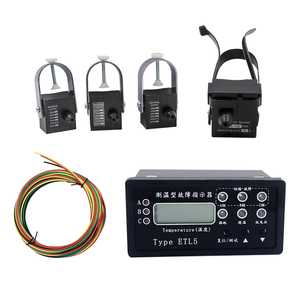Understanding Short Circuit and Earth Fault Indicator
The short circuit and earth fault indicator is an essential component in electrical safety management. By rapidly detecting faults within an electrical system, it plays a crucial role in preventing potential hazards, such as equipment damage and electrical fires. This device is designed to enhance safety in both industrial and residential settings, ensuring efficient power distribution while providing critical feedback on system integrity.
Types of Short Circuit and Earth Fault Indicators
There are various types of short circuit and earth fault indicators, each designed to cater to specific requirements and environments:
- Analog Indicators: These use needle gauges to provide a visual representation of fault levels.
- Digital Indicators: Featuring advanced display systems, these devices provide precise measurements and fault diagnostics.
- LED Indicators: Simple yet effective, LED models give instant visibility of the circuit status with minimal power consumption.
- Wireless Indicators: These innovative products offer remote monitoring capabilities, allowing for real-time alerts from any location.
Applications of Short Circuit and Earth Fault Indicators
Short circuit and earth fault indicators find applications across a myriad of industries, ensuring electrical safety and system reliability:
- Industrial Settings: Used in factories and production plants to protect equipment and maintain operational continuity.
- Commercial Buildings: Essential for offices and retail spaces to offer safety measures against electrical failures.
- Residential Use: Incorporated in homes to provide safety alerts for family members and ensure peace of mind.
- Renewable Energy Systems: Vital for solar and wind energy setups to safeguard against faults that can impair system performance.
Benefits and Features of Short Circuit and Earth Fault Indicators
The short circuit and earth fault indicator comes equipped with a range of features that enhance its utility and effectiveness:
- Rapid Fault Detection: Quick identification of faults allows for timely interventions, mitigating damage.
- Enhanced Safety: Reduces risks associated with electrical hazards, safeguarding both infrastructure and personnel.
- Ease of Installation: Designed for straightforward installation, making them user-friendly even for those with limited technical knowledge.
- Regular Maintenance Alerts: Many models offer notifications for maintenance needs, ensuring peak performance over time.
- Compatibility: These indicators are highly compatible with various electrical systems, enhancing their versatility.


























































































































































































